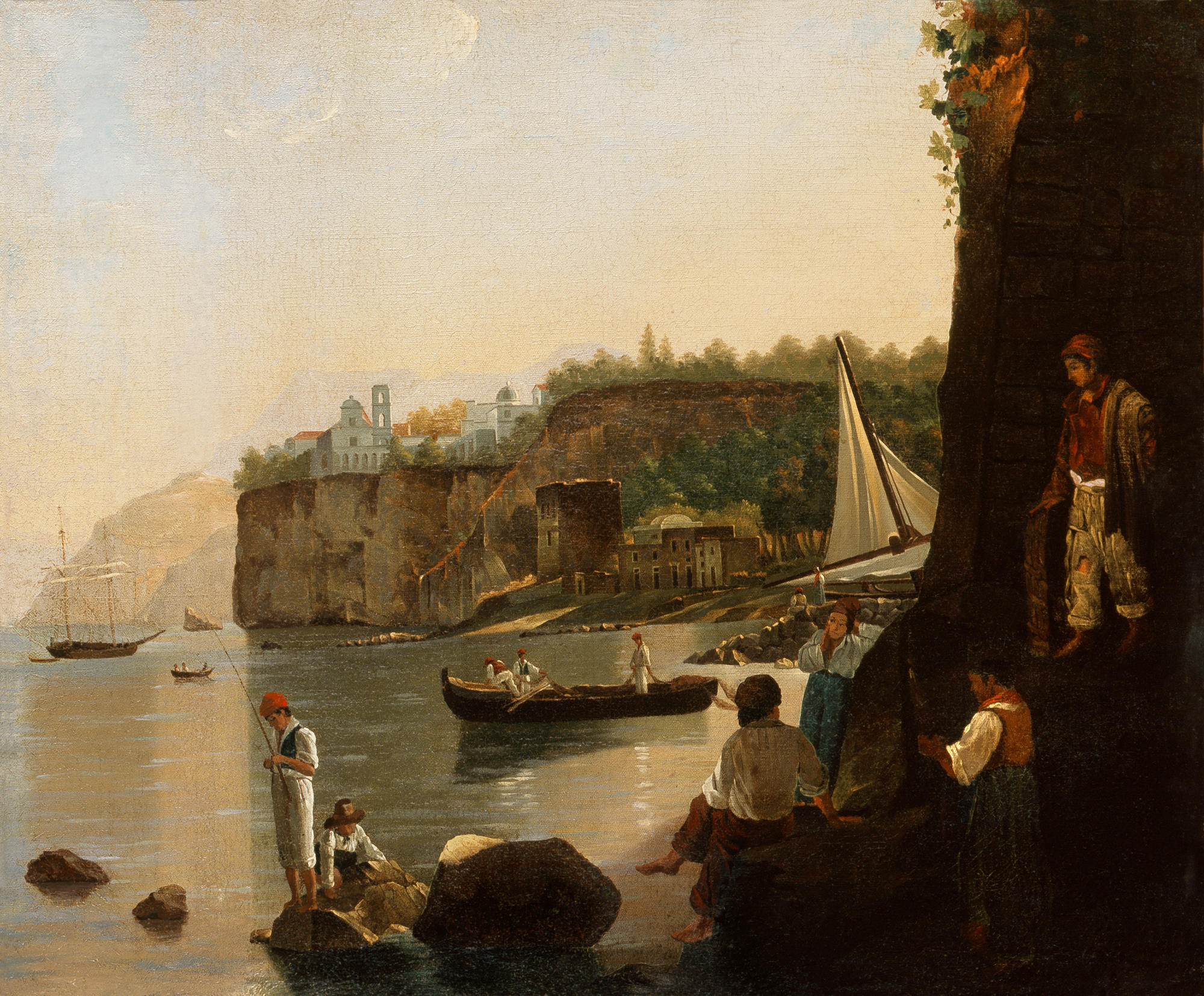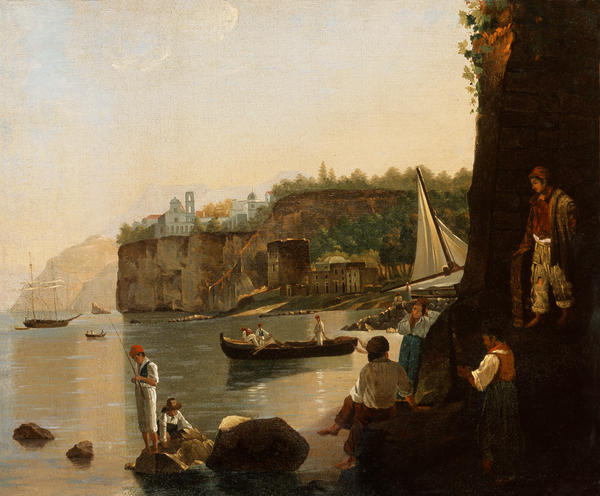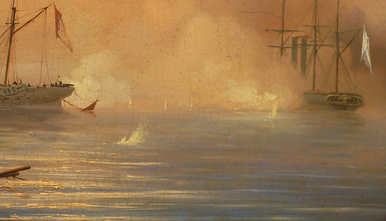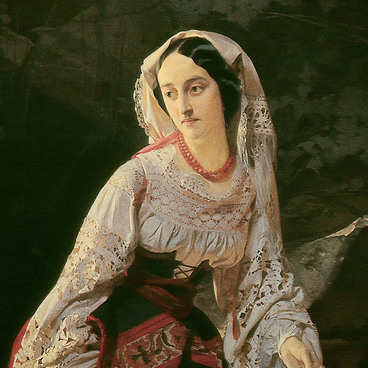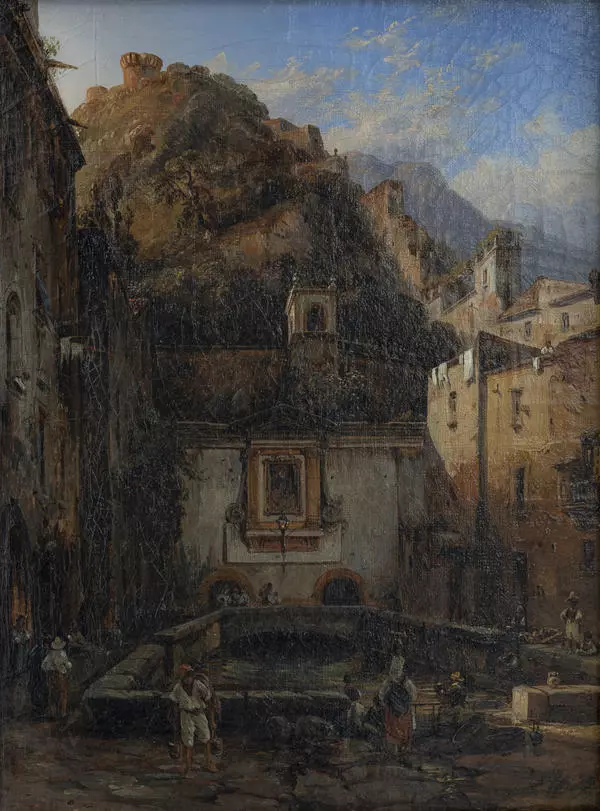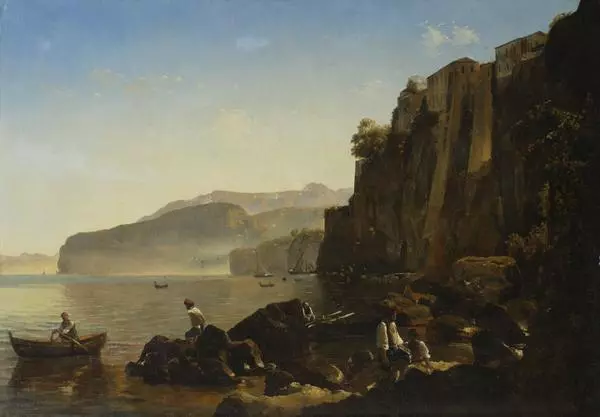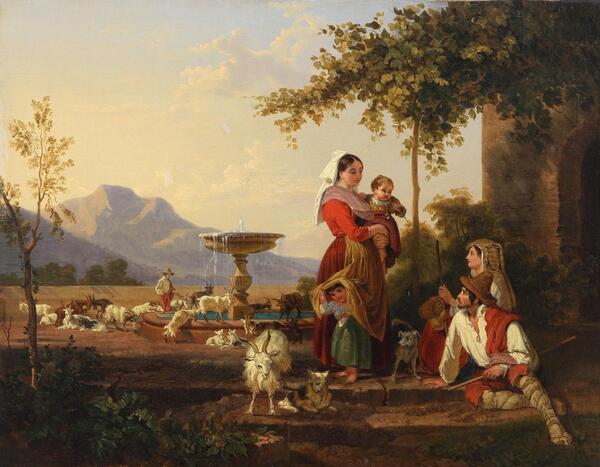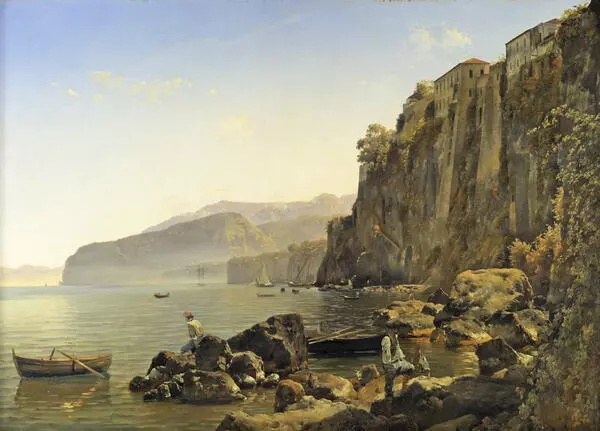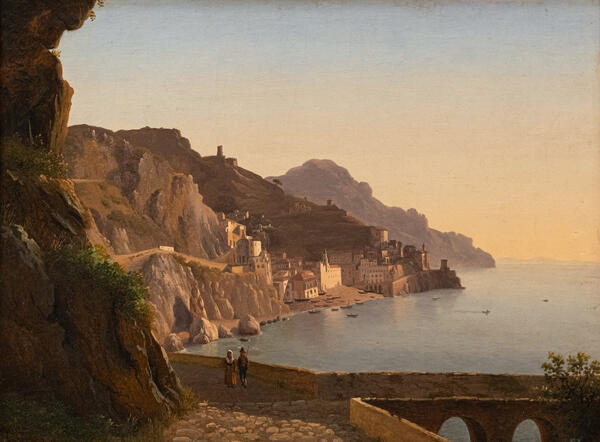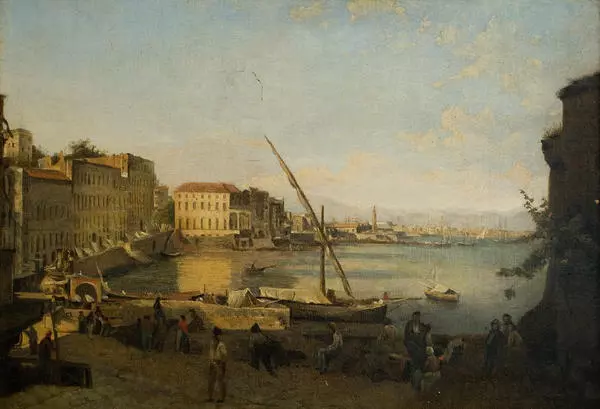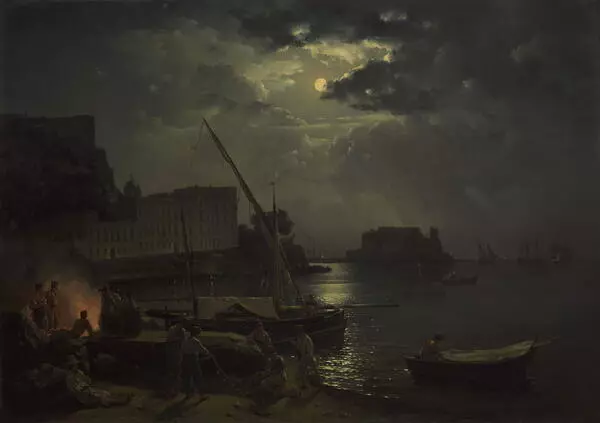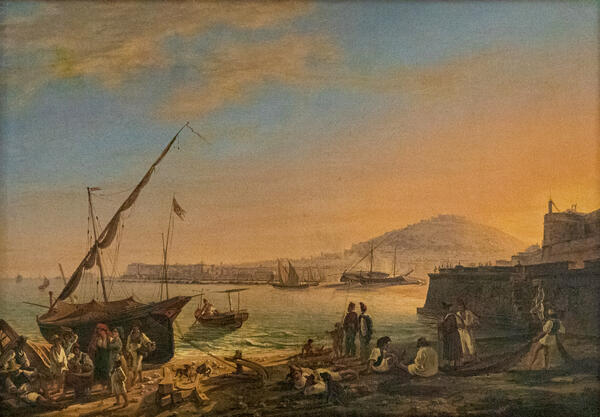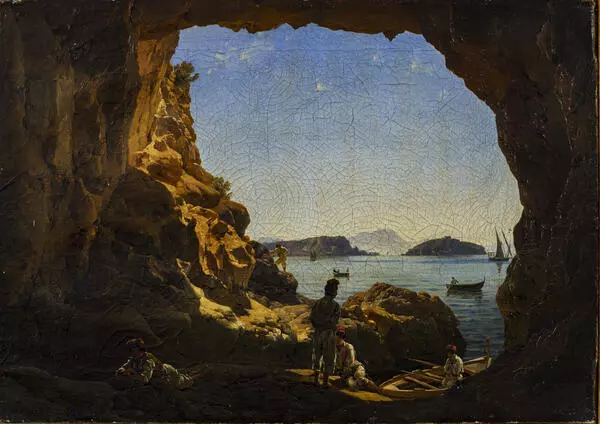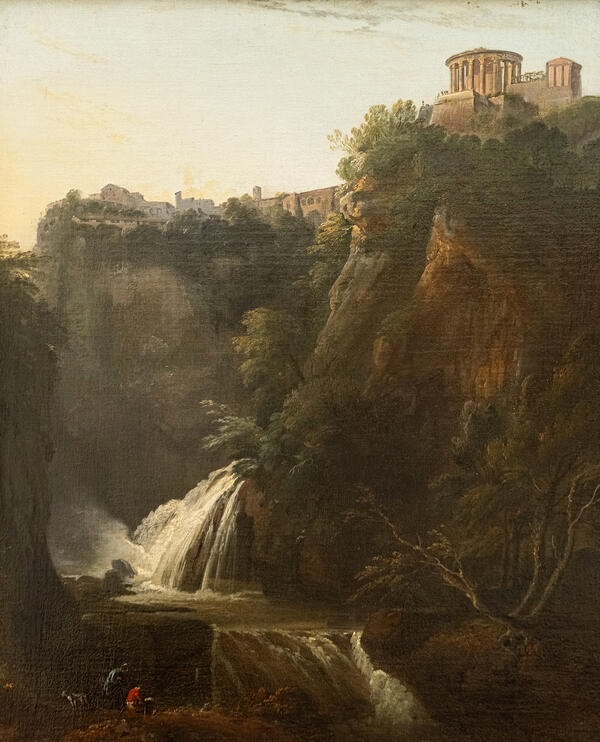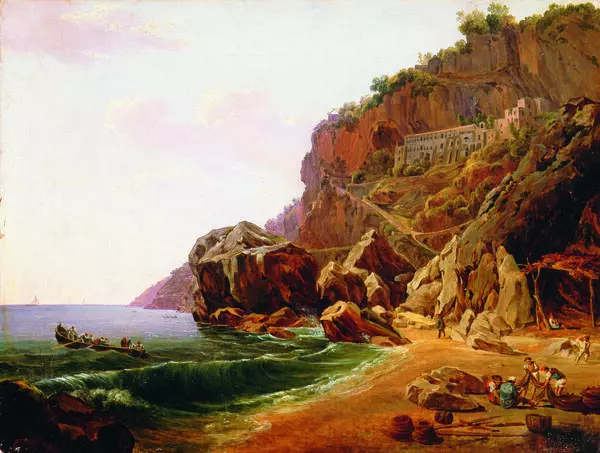Silvester Shchedrin is a Russian landscape painter. At the age of nine, he was admitted to the landscape painting class of the Academy of Arts where he studied under Professor Mikhail Ivanov. While in the Academy, Shchedrin received a silver, small and large gold medals. The last one was given to the painter in 1812 after he graduated from the Academy. With the medal came the right to travel abroad to further improve the skills.
Because of the Napoleonic wars, he was not able to go to Italy until 1819. Living between Rome and Naples Shchedrin dedicated himself to non-stop painting of Southern cities and nature. For him, Italy was a country of the classic art where he could learn a lot and put his talent and skills to test.
Silvester Shchedrin became a famous and sought-after painter. He created a lot of etudes and paintings, which he reiterated and modified in fulfilling orders from his customers.
One of such works is the small Italian Landscape, which is a part of the museum collection. The painter shows us a rather modest piece of landscape – a narrow strip between the sea and a tall cliff on the shore with the locals beneath it. Shchedrin used the widely known technique of the perspective creation: a contrast between shore rocks and the endless sea. In this painting, the master depicted the sky and the sea as a huge variety of cold or golden or brown tones.
Shchedrin spent the rest of his rather short life in Italy. He fell in love with that country and it ceased to make him feel like an alien. However, even there he remained a Russian, a painter, who could not stop thinking about the future of the national art – it is all in his surviving letters to the homeland, where his works were highly praised. ‘Everybody is in awe of your small paintings’ – his brother Appolon wrote to him.
At the end of his days, Silvester Shchedrin lived and worked in Sorrento and its outskirts: Castellammare and Vico. ‘Sorrento is a really beautiful place’ – he wrote to Russian sculptor Samuil Galberg adding that ‘Landscape life has no match’.
Silvester Shchedrin died in Sorrento and was buried in a Jesuit church. It did not mean that he converted to Catholicism, it rather stressed the recognition and popularity he earned in Italy.
Because of the Napoleonic wars, he was not able to go to Italy until 1819. Living between Rome and Naples Shchedrin dedicated himself to non-stop painting of Southern cities and nature. For him, Italy was a country of the classic art where he could learn a lot and put his talent and skills to test.
Silvester Shchedrin became a famous and sought-after painter. He created a lot of etudes and paintings, which he reiterated and modified in fulfilling orders from his customers.
One of such works is the small Italian Landscape, which is a part of the museum collection. The painter shows us a rather modest piece of landscape – a narrow strip between the sea and a tall cliff on the shore with the locals beneath it. Shchedrin used the widely known technique of the perspective creation: a contrast between shore rocks and the endless sea. In this painting, the master depicted the sky and the sea as a huge variety of cold or golden or brown tones.
Shchedrin spent the rest of his rather short life in Italy. He fell in love with that country and it ceased to make him feel like an alien. However, even there he remained a Russian, a painter, who could not stop thinking about the future of the national art – it is all in his surviving letters to the homeland, where his works were highly praised. ‘Everybody is in awe of your small paintings’ – his brother Appolon wrote to him.
At the end of his days, Silvester Shchedrin lived and worked in Sorrento and its outskirts: Castellammare and Vico. ‘Sorrento is a really beautiful place’ – he wrote to Russian sculptor Samuil Galberg adding that ‘Landscape life has no match’.
Silvester Shchedrin died in Sorrento and was buried in a Jesuit church. It did not mean that he converted to Catholicism, it rather stressed the recognition and popularity he earned in Italy.
